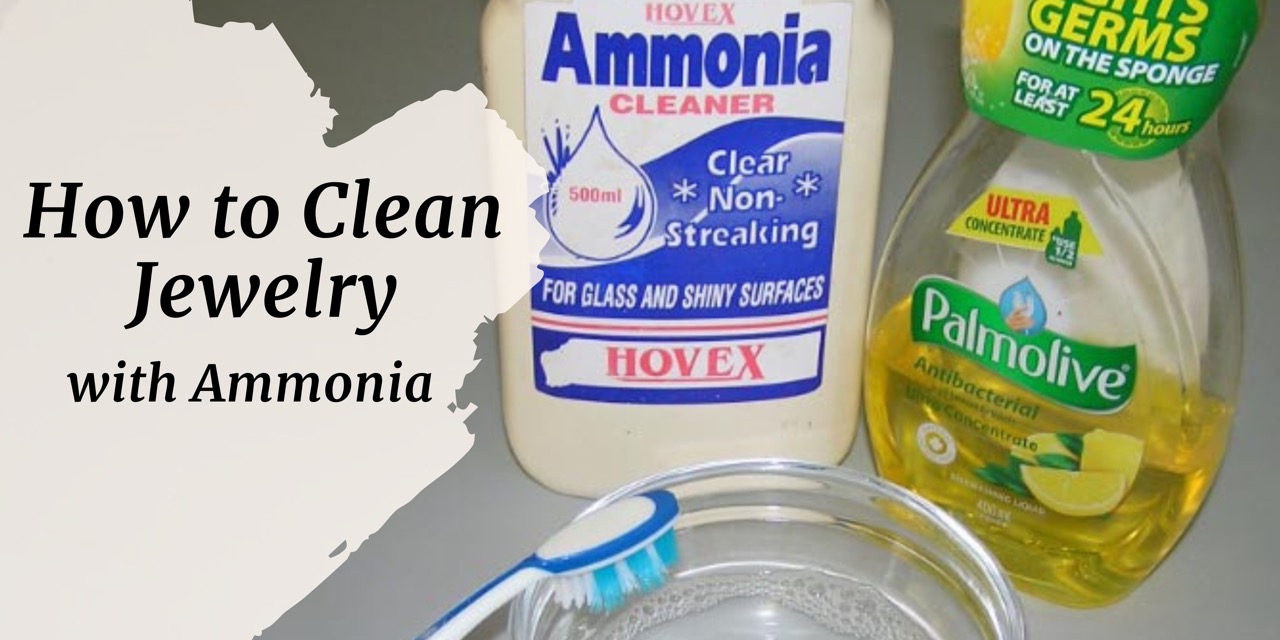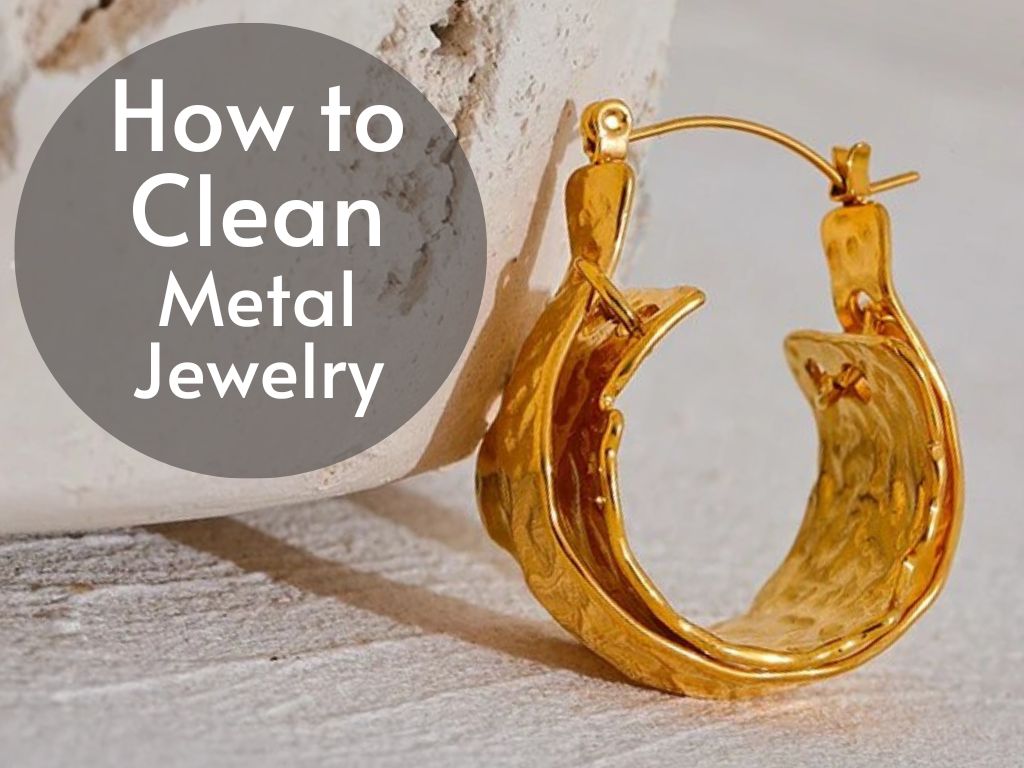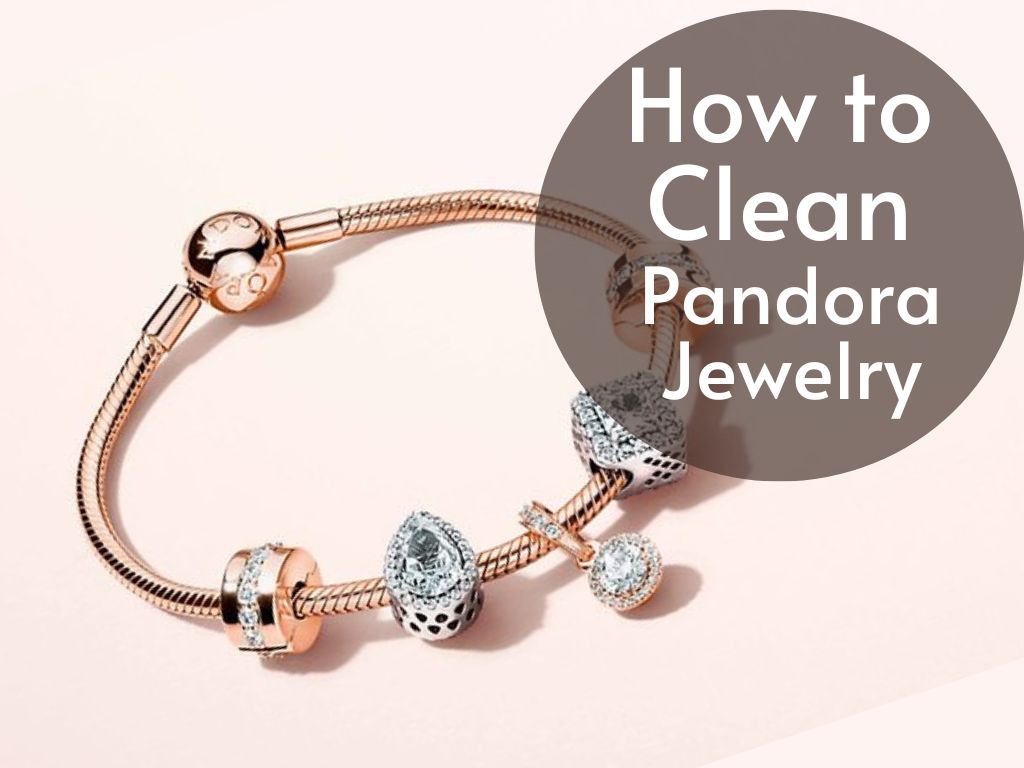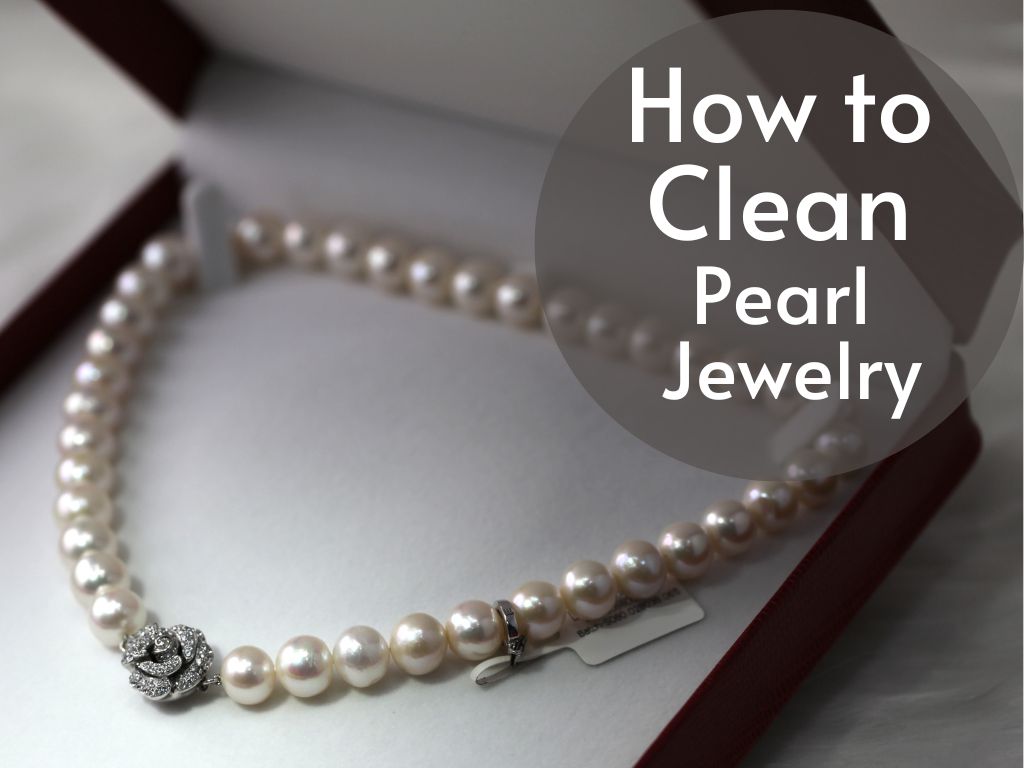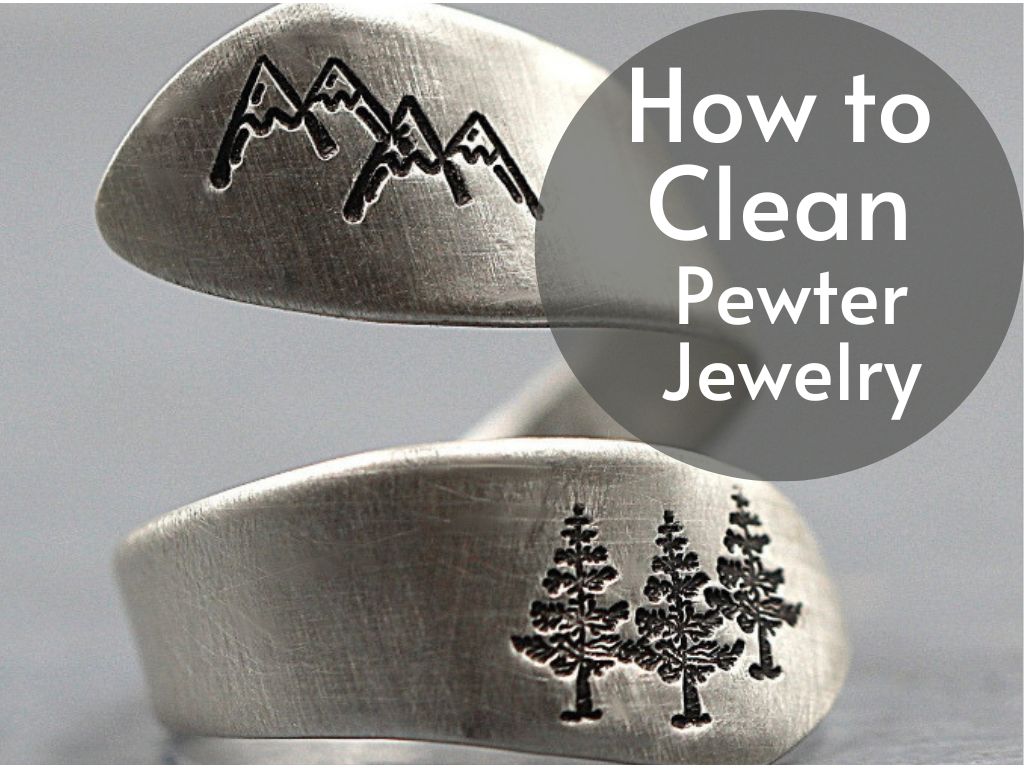Jewelry holds a special place in our lives, whether it’s an heirloom passed down through generations or a symbol of love and commitment. Over time, however, the sparkle and shine of our beloved pieces can become dulled by dirt, oils, and everyday wear.
This is why regular cleaning is essential to maintain the beauty and longevity of our jewelry. In this comprehensive guide, we will delve into the world of jewelry cleaning and explore one particularly effective method: using ammonia as a cleaning agent.
The Importance of Cleaning Jewelry Regularly
Cleaning jewelry regularly goes beyond mere aesthetics; it plays a crucial role in preserving its value and integrity. Jewelry accumulates various substances over time: dirt, body oils, lotions, soap residue, and even environmental pollutants.
These contaminants not only diminish the luster but can also cause damage to delicate gemstones or precious metals. Moreover, regular cleaning allows us to inspect our jewelry for any loose stones or signs of wear.
By detecting these issues early on, we can prevent further damage or loss. Therefore, treating your jewelry to regular cleaning sessions is an act of care that ensures its longevity and allows you to continue enjoying its beauty for years to come.
Introduction to Using Ammonia as a Cleaning Agent
When it comes to choosing a suitable cleaning agent for your precious jewelry pieces, ammonia stands out for its effectiveness in removing stubborn dirt and grime while being gentle enough on most gemstones and metals. Ammonia (NH3) is a colorless gas with a distinct pungent odor that dissolves easily in water. The chemical properties of ammonia make it an excellent choice for cleaning various types of jewelry without causing significant harm.
Its alkaline nature works wonders against oily residues, making it especially effective for cutting through the greasy build-up that can accumulate on jewelry surfaces. However, caution must be exercised, as certain gemstones and jewelry pieces may require specialized cleaning methods or avoid contact with ammonia altogether.
Understanding Ammonia
Brief explanation of what ammonia is and its properties:
Ammonia, chemically represented as NH3, is a colorless gas with a pungent smell. It consists of three hydrogen atoms bonded to a single nitrogen atom. Ammonia is highly soluble in water, which makes it an excellent cleaning agent for jewelry.
Its ability to dissolve various substances and remove dirt, grime, and tarnish makes it ideal for restoring the shine and luster of precious metals and gemstones. Ammonia has alkaline properties, meaning it can act as a weak base when dissolved in water.
This property allows ammonia to react with acidic compounds commonly found on jewelry surfaces, such as dirt or oils from the skin. The chemical reaction between ammonia and these acidic substances helps break them down, making it easier to remove them during the cleaning process. Safety precautions when handling ammonia:
While ammonia can be an effective cleaning agent for jewelry, it is crucial to handle it with care due to its potential hazards. Here are some safety precautions to consider: 1. Proper ventilation: Ammonia gas can be harmful if inhaled in high concentrations.
Always ensure that you are working in a well-ventilated area or near an open window to avoid excessive exposure. 2. Protective gear: It is advisable to wear rubber gloves and safety goggles when handling ammonia solution to prevent skin irritation or eye damage.
3. Dilution: When working with household strength ammonia solution, always dilute it following the recommended ratio mentioned earlier in this article (one part ammonia to six parts distilled water). Using undiluted or stronger concentrations may cause damage to certain types of jewelry.
4. Avoid mixing chemicals: Never mix ammonia with bleach or any other cleaning agents containing chlorine, as it can produce toxic fumes. By adhering to these safety precautions, you can ensure a safe and effective cleaning process when using ammonia for your jewelry.
Tools and Materials Needed
When it comes to cleaning jewelry with ammonia, there are several essential tools and materials you’ll need to ensure an effective and safe cleaning process. Here is a list of necessary items:
Ammonia Solution (Household Strength)
The primary component for cleaning jewelry with ammonia is, of course, the ammonia solution itself. It’s important to use household strength ammonia, which typically contains around 5-10% ammonia content. This concentration is strong enough to remove dirt, grime, and tarnish from your jewelry effectively.
Distilled Water
In addition to the ammonia solution, you’ll need distilled water for diluting the solution. Distilled water is crucial because it is free from impurities like minerals or contaminants found in tap water. Using distilled water ensures that your cleaning solution remains pure and does not cause any additional damage or discoloration to your precious jewelry.
Soft-Bristle Toothbrush or Jewelry Brush
A soft-bristle toothbrush or a dedicated jewelry brush will be your go-to tool for gently scrubbing away dirt and grime from your jewelry pieces. It’s important to choose a brush with soft bristles to avoid scratching or damaging delicate metal settings or gemstones. Ensure that the brush you select is specifically meant for jewelry cleaning purposes.
Microfiber Cloth or Lint-Free Cloth
To dry and polish your jewelry after cleaning, a microfiber cloth or lint-free cloth is ideal. These fabrics are incredibly gentle on surfaces and won’t leave behind any fibers that may get caught in prongs or intricate designs. The absorbent nature of microfiber cloths allows for efficient drying while leaving a streak-free shine on your newly cleaned jewelry.
Small Bowl or Container for Mixing Solution
You’ll need a small bowl or container to mix your ammonia solution. Opt for a container made of glass or plastic to avoid any chemical reactions that may occur with metal containers.
Make sure the bowl or container is clean and free from any residue that could potentially transfer onto your jewelry during the cleaning process. By gathering these tools and materials, you will be fully prepared to clean your jewelry effectively and efficiently using ammonia as a cleaning agent.
Preparing the Cleaning Solution
Proper ratio of ammonia to water for effective cleaning:
When it comes to cleaning jewelry with ammonia, achieving the right ratio of ammonia to water is crucial. The general rule of thumb is to use one part ammonia and six parts distilled water.
This balanced ratio ensures that the solution is potent enough to remove dirt and grime from your precious jewelry while minimizing any potential damage. It’s important not to be tempted to increase the concentration of ammonia as it can be too harsh on certain types of jewelry.
Adjusting the ratio based on jewelry type (e.g., more diluted solution for delicate pieces)
While the aforementioned ratio serves as a safe starting point, it’s worth noting that different types of jewelry require varying levels of concentration in the cleaning solution. Delicate pieces, such as antique or vintage jewelry with intricate designs, should be treated with extra caution.
For these delicate pieces, it is recommended to dilute the solution further by increasing the amount of distilled water in relation to ammonia. On the other hand, if you are dealing with heavily tarnished or stubbornly dirty jewelry, you may opt for a slightly stronger solution.
However, exercise caution when doing so and always test a small inconspicuous area first. Additionally, certain gemstones may react differently to ammonia, so be careful when using it on jewelry adorned with pearls or opals since they are more sensitive and prone to damage.
In any case, it’s best practice to start with a moderately diluted solution and then adjust accordingly based on your specific needs and considerations. Remember that proper care and attention during this process will ensure your precious jewelry remains radiant without compromising its structural integrity.
Cleaning Different Types of Jewelry with Ammonia
Gold Jewelry
Gold jewelry, known for its timeless beauty and elegance, requires regular cleaning to maintain its luster. Cleaning gold with ammonia is a safe and effective method that can restore its shine.
Begin by preparing the ammonia solution mentioned earlier in the article, following the recommended ratio of one part ammonia to six parts distilled water. To clean gold jewelry, start by placing it in a small bowl or container filled with the prepared ammonia solution.
Allow the gold to soak for about 10-15 minutes. This soaking process helps loosen dirt and grime that may have accumulated on the surface.
Next, take a soft-bristle toothbrush or a jewelry brush and gently scrub the gold piece, paying particular attention to any intricate details or crevices. Be cautious when cleaning different karat golds, as lower karat pieces can be more delicate than higher karat ones.
Avoid using excessive force during brushing to prevent any potential damage. Once cleaned thoroughly, rinse the piece under warm running water to remove any residual ammonia solution.
Use a microfiber cloth or lint-free cloth to pat dry the jewelry gently. Avoid using paper towels or abrasive materials that can cause scratches on delicate surfaces.
Silver Jewelry
Silver jewelry often tarnishes over time due to exposure to air and certain environmental factors. Fortunately, you can revive tarnished silver using an ammonia solution effectively. The chemical reaction between silver sulfide (the tarnish) and ammonia helps break down and remove tarnish from silver pieces.
To clean tarnished silver jewelry with ammonia, submerge it in the prepared solution for approximately five minutes. Be cautious when cleaning silver pieces containing gemstones; prolonged exposure to ammonia may damage them.
After soaking, use a soft-bristle toothbrush or jewelry brush to gently scrub away any remaining tarnish. Once the tarnish is removed, rinse the silver jewelry under running water to eliminate any traces of ammonia.
Dry the piece thoroughly using a microfiber cloth or lint-free cloth, ensuring no moisture remains. This method can restore the shine and brilliance of your silver jewelry, making it appear as good as new.
Diamond Jewelry
Diamonds are prized for their exceptional brilliance and sparkle. Over time, however, dirt and oils can accumulate on their surface, dulling their shine.
Cleaning diamond jewelry with ammonia is an effective way to bring back their radiance. To clean diamond jewelry with ammonia, prepare the cleaning solution in a small bowl or container as mentioned earlier in the article.
Soak the diamond piece for around 15 minutes to loosen any dirt or debris that may have settled on its surface. Once soaked, use a soft-bristle toothbrush or jewelry brush to gently scrub the diamond in circular motions.
Pay attention to hard-to-reach areas such as underneath prongs where dirt tends to accumulate. Avoid using excessive pressure while brushing to prevent any damage.
After brushing, thoroughly rinse the diamond under warm running water to remove any residue from the ammonia solution. Dry it carefully with a soft cloth or let it air-dry before storing it safely in a jewelry box. Conclusion
Cleaning your precious jewelry with ammonia can help maintain its beauty and extend its lifespan by removing dirt and restoring its original shine. Remember always to handle ammonia with caution and follow proper safety guidelines.
By regularly cleaning your gold, silver, and diamond pieces with an ammonia solution tailored for each type of metal or gemstone, you can ensure that they continue dazzling for years to come. So go ahead and enjoy your sparkling jewels with confidence!

